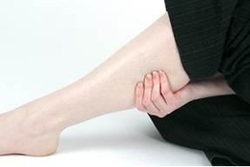 Have you ever had a good night’s sleep interrupted by a stabbing pain through the calf of your leg? Have you ever been gripped by agonizing spasms in your lower back that threatened to knock you down? When a muscle tightens without you “telling it to” and just won't relax despite your best efforts, you are suffering a muscle cramp. Most muscles in your body are what are called "voluntary" muscles. These can usually be contracted and relaxed in order to control your arms, legs, fingers, neck, posture and more. Even the simplest movements are a highly synchronized sequence of muscle contractions and relaxations.
3 Comments
 When someone decides to visit the doctor about musculoskeletal pain, back pain is the most common complaint. Sometimes back pain is the result of very specific trauma—a car accident or a slip-and-fall. Other times, however, its causes are much less obvious—cumulative years of poor posture, inactivity or bad nutrition, for example. The rest of this article looks at the role exercise can play in preventing and treating back pain.  Keeping our joints healthy is one of the most important things we can do to remain independent and active as we age. Life can become quite challenging for individuals who are immobilized by joint pain, since it can result in reduced physical and social activity as well as a higher risk of psychological and emotional problems.  The term metabolic syndrome is actually not just one condition. It is a term relating to a group of different related conditions that have been shown to increase the threat of diabetes and cardiovascular disease. With the high rate of obesity and the typical American diet high in sugar, salt and hydrogenated oils, metabolic syndrome is becoming more of a problem. 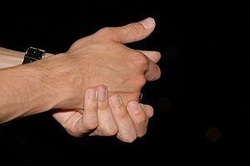 Everyone develops scar tissue over time. This is the body’s normal reaction to injury—no matter how slight. Even simple actions that most people wouldn’t regard as injury-producing can lead to a buildup of scar tissue. Repetitive motions like typing, for example, can cause micro-trauma to the soft tissue (often referred to as an overuse injury), leading to carpal tunnel syndrome. As part of the repair process, scar tissue is created. However, this type of tissue tends to interfere with the smooth movement of muscle and may eventually affect your range of motion.  A back spasm can occur when the muscles supporting the spinal column, particularly those in the lower back, become overworked. If the muscles suddenly contract near the nerve roots around the spinal cord, this condition can be extremely painful. Muscles that are overstretched or worked more than usual can become tender and inflamed. The pain may first become noticeable when you are twisting your back, or are pushing or pulling something, particularly if you are moving something heavy. Sudden movements in particular are likely to trigger back spasms. Playing golf, for example, in which the back twists quickly as the golfer swings, can cause the back to spasm. Weightlifting, baseball and football are other sports that carry a higher risk of back spasm. Even something as seemingly safe as gardening can cause back spasms, since it usually involves bending and turning. If the activity is not stopped immediately, the spasms are likely to get worse.  When National Hockey League (NHL) superstar Sidney Crosby suffered two concussions within days of one another, he sought the help of his chiropractor, Dr. Ted Carrick, a Chiropractic Neurologist who treats Crosby and other players in the NHL and NFL. Carrick says, “In professional hockey alone, there are more than 50,000 hits annually, and far too many of these are serious injuries to the head.” Hockey is a rough contact sport, as anyone who has been to a game can attest. As Rodney Dangerfield once famously quipped, “I went to a fight the other night and a hockey game broke out.” 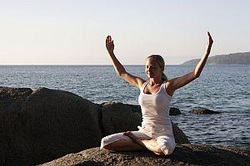 As the leading cause of disability in Americans and Canadians under 45 years of age, lower back pain is the second most common reason why people visit their doctor. An estimated 60% to 80% of the adult population suffers from low back pain at some point in life, and traditional medical treatments are usually not effective in the long-term. However, there are alternative ways of dealing with lower back pain that have been proven to be more successful and that do not involve drugs or invasive surgery. These include chiropractic care, massage therapy and—interestingly enough—yoga. 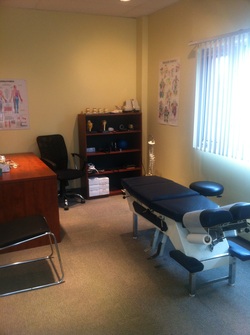 Toronto is a big city, with many chiropractors. How to find the one best suited to treat your unique case? Here are some things to look for: - Have friends, family or colleagues whose judgment you trust recommended a particular chiropractor? Word of mouth can be a helpful way to locate a good candidate. Don't be concerned if the health issue of the person making the recommendation is not identical to your own; chiropractors are trained to diagnose and treat numerous types of conditions. What about patients who can't ask for personal recommendations because they are new to the area, or because the people they know don't receive chiropractic care? The website Rate.MD can be a useful tool. It supplies personal opinions on individual healthcare providers' approach, treatment effectiveness, office space, etc. Make sure you read the comments carefully to see if they sound genuine. Too many review in a short period of time is a red flag. Once you decide on a chiropractor pay attention to the following on the first visit. - Does the chiropractor complete a thorough initial examination? The first examination should always be complete and un-rushed. Sometimes patients provide lab or test results and share their own evaluation and/or that of previous health care providers. This is all helpful information, but it should complement rather than replace the chiropractor's own professional assessment. Because of the need to look into the patient's relevant health history, conduct the exam, and then go over the findings and proposed treatment plan, initial visits are usually longer than follow-up visits. 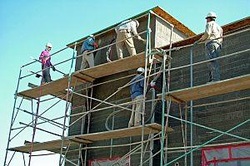 The Occupational Health and Safety Administration (OSHA) estimates that workplace-related injuries cost businesses nearly $170 billion each year. With money like this at stake, it’s easy to see that keeping your workers healthy through an Occupational Health and Safety (OHS) program could have a very high return on investment. And chiropractors can play a major role in helping companies to manage risk and improve productivity. 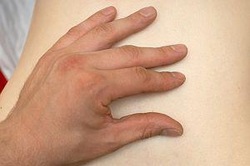 Active Release Technique (ART) is making news! Articles in mainstream magazines like Men’s Journal and newspapers like the Wall Street Journal are introducing readers to this very effective—yet still little-known—hands-on therapy. So what exactly is ART? And what can it do for you? At the most basic level, ART uses a specific type of massage and movement to promote healing and reduce pain in muscles, tendons, ligaments and other connective tissue. Carpal tunnel syndrome, low back pain and runner’s knee are some of the more common conditions that respond well to ART. New York City chiropractor and ART therapist Keren Day told Men’s Journal, “Tight, dysfunctional muscles are tugging and pulling at the joint or irritating nerves, and often that's what is causing the injury.”  The healthy shoulder joint allows us to move our arms a full 270 degrees in range, which no other joint can do. When you consider the shoulder’s range of motion and its complexity, it’s no wonder that this joint is particularly prone to injury. However, there are some steps you can take to help prevent shoulder damage. The anatomy of the shoulder involves not only the ball-and-socket type glenohumeral joint that most people are familiar with (which allows for a wide range of movement), but three other joints as well, all supported by tendons and ligaments. These four joints are composed of the glenohumeral, scapulothoracic, acromioclavicular and sternoclavicular joints. The two clavicular joints are not very mobile, so injuries to these are often the cause of shoulder complaints. But because the glenohumeral and scapulothoracic joints have such a wide range of motion, the supporting tendons and ligaments are more prone to injury. |
AuthorPosted by Dr. Babak Missaghi Archives
August 2017
Categories
All
|


 RSS Feed
RSS Feed
